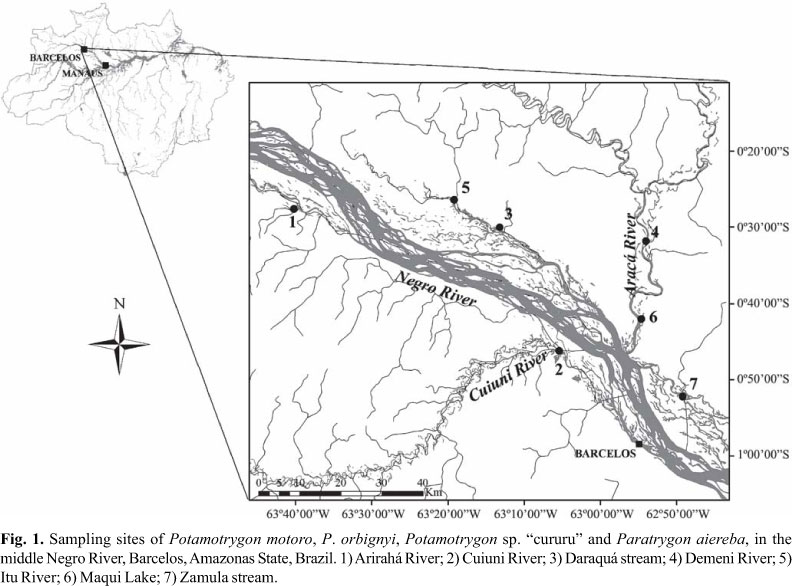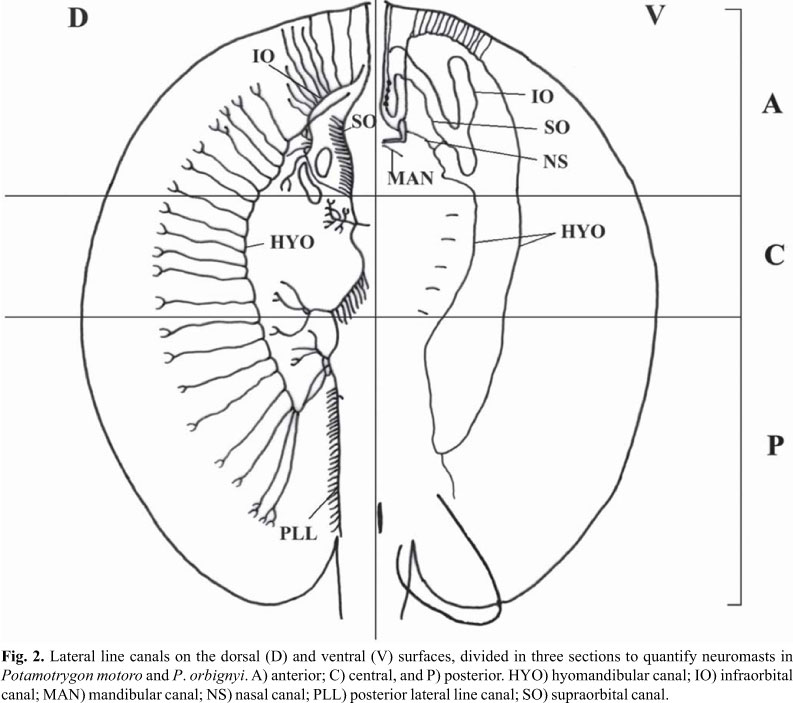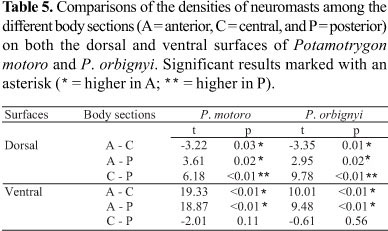The relationship between the distribution of the lateral line canals and their functionality has not been well examined in elasmobranchs, especially among Neotropical freshwater stingrays of the family Potamotrygonidae. The spatial distribution of the canals and their tubules and the quantification of the neuromasts were analyzed in preserved specimens of Potamotrygon motoro, P. orbignyi, Potamotrygon sp. "cururu", and Paratrygon aiereba from the middle Negro River, Amazonas, Brazil. The hyomandibular, infraorbital, posterior lateral line, mandibular, nasal and supraorbital canals were characterized and their pores and neuromasts quantified. The ventral canals are known to facilitate the accurate localization of prey items under the body, and our results indicate that the dorsal canals may be employed in identifying the presence of predators or potential prey positioned above the stingray's body. The presence of non-pored canals in the ventral region may be compensated by the high concentration of neuromasts found in the same area, which possibly allow the accurate detection of mechanical stimuli. The concentration of non-pored canals near the mouth indicates their importance in locating and capturing prey buried in the bottom substrate, possibly aided by the presence of vesicles of Savi.
Feeding behavior; Mechanosensory; Neuromast; Paratrygon; Potamotrygon










